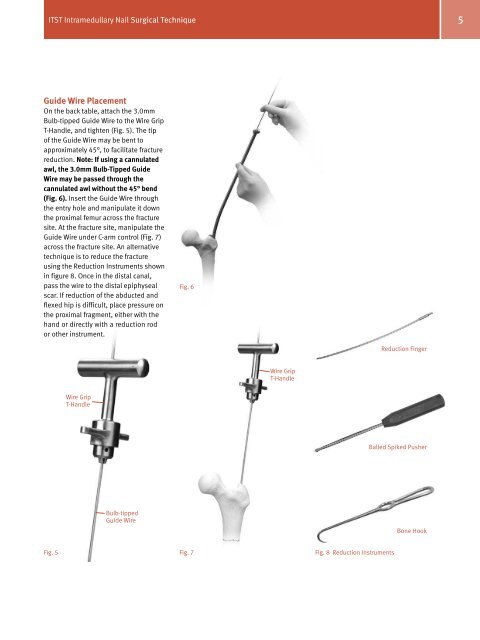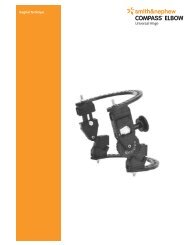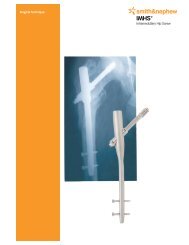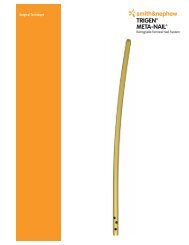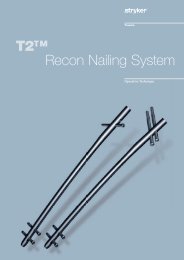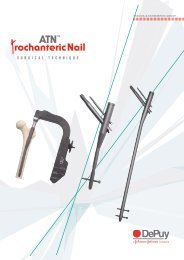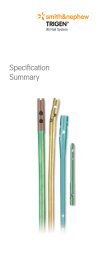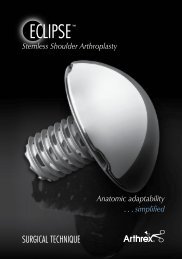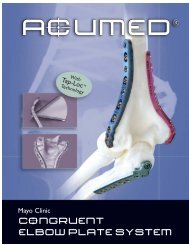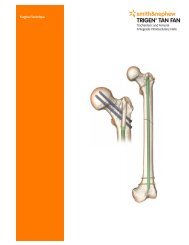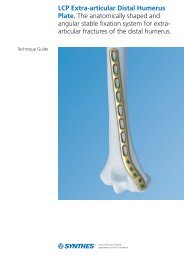ITST IM Nail ST (97-22257-102-00).indd
ITST IM Nail ST (97-22257-102-00).indd
ITST IM Nail ST (97-22257-102-00).indd
You also want an ePaper? Increase the reach of your titles
YUMPU automatically turns print PDFs into web optimized ePapers that Google loves.
<strong>IT<strong>ST</strong></strong> Intramedullary <strong>Nail</strong> Surgical Technique 5<br />
Guide Wire Placement<br />
On the back table, attach the 3.0mm<br />
Bulb-tipped Guide Wire to the Wire Grip<br />
T-Handle, and tighten (Fig. 5). The tip<br />
of the Guide Wire may be bent to<br />
approximately 45°, to facilitate fracture<br />
reduction. Note: If using a cannulated<br />
awl, the 3.0mm Bulb-Tipped Guide<br />
Wire may be passed through the<br />
cannulated awl without the 45° bend<br />
(Fig. 6). Insert the Guide Wire through<br />
the entry hole and manipulate it down<br />
the proximal femur across the fracture<br />
site. At the fracture site, manipulate the<br />
Guide Wire under C-arm control (Fig. 7)<br />
across the fracture site. An alternative<br />
technique is to reduce the fracture<br />
using the Reduction Instruments shown<br />
in figure 8. Once in the distal canal,<br />
pass the wire to the distal epiphyseal<br />
scar. If reduction of the abducted and<br />
flexed hip is difficult, place pressure on<br />
the proximal fragment, either with the<br />
hand or directly with a reduction rod<br />
or other instrument.<br />
Fig. 5<br />
Wire Grip<br />
T-Handle<br />
Bulb-tipped<br />
Guide Wire<br />
Fig. 6<br />
Fig. 7<br />
Wire Grip<br />
T-Handle<br />
Fig. 8 Reduction Instruments<br />
Reduction Finger<br />
Balled Spiked Pusher<br />
Bone Hook


